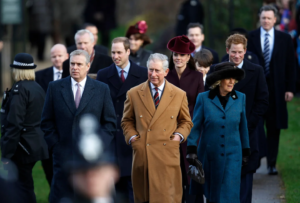Ukrainian President Volodymyr Zelensky said he would consider sitting down with Donald Trump and Vladimir Putin at a proposed peace summit in Budapest, the first sign of cautious willingness to engage in negotiations despite intensifying tensions with Washington over the future of the war.
The summit plan came after a telephone conversation between the Russian and American presidents, who expressed their determination to sit down in the Hungarian capital “in the coming weeks” to discuss the conflict. The negotiations would be the most serious diplomatic face-to-face encounter between Moscow and Washington since Russia attacked Ukraine in February 2022.
Zelensky: ‘We Will Agree to One Format or Another’
Speaking during a press conference in Kyiv on Monday, Zelensky signaled Ukraine would show up if officially invited.
“If it is an invitation within the format where we meet as three — or as it’s also called, shuttle diplomacy — then in one format or another, we will consent,” Zelensky said to reporters.
His diplomatic language reflected Ukraine’s delicate balancing act: being willing to talk without appearing to cave in to foreign pressure, particularly as news emerged of a gruff meeting with Trump at the White House last Friday.
Tense White House Meeting: ‘Frank, But Difficult’
The Trump–Zelensky summit, as reported by various media outlets, became a “shouting match” during which US officials were urging Ukraine to accept Russian offers for concluding the war — something Kyiv has consistently denied.
Zelensky described the conversation as “frank,” noting that Ukraine is advocating for sincere peace, not hurried peace. He would not elaborate but hinted there were spirited differences in private.
The Financial Times said Trump allegedly threatened Zelensky that Putin would “destroy Ukraine” if Kyiv did not agree to a ceasefire on the current front lines. Trump paid no heed to battlefield maps and recommended Zelensky hand Russia the whole eastern Donbas territory, officials briefed on the call told them.
Trump then tweeted:
“Russia and Ukraine should stop where they are. Let both claim victory — let history decide!”
Zelensky responded that he was willing to have an immediate ceasefire, but categorically excluded any territorial concessions and said that “Ukraine will not give anything to the aggressor.”
Budapest Summit Sparks Controversy
Zelensky further condemned Hungary as a poor venue for the upcoming summit due to Prime Minister Viktor Orbán’s close ties with the Kremlin.
“I don’t think Orbán can do something positive for Ukrainians or even make a balanced contribution,” Zelensky said.
Trump, meanwhile, told reporters that he wanted to “make it comfortable for everybody,” suggesting the meeting could take place either jointly or in separate sessions.
“We’ll be involved in threes, but it may be separated,” Trump said. “The three leaders have to get together.”
Russia’s Foreign Minister Sergei Lavrov and U.S. Secretary of State Marco Rubio had what Moscow called a “constructive” telephone conference on Monday to arrange the framework for the Budapest summit, but no date has been planned.
Ukraine Departs Washington Empty-Handed
Zelensky’s trip to Washington was also intended to get U.S. Tomahawk cruise missiles to strike Russian military facilities far inside Russian territory — an offer Trump reportedly refused to make.
We basically didn’t get what we were looking for,” Ukrainian analyst Mykola Davyduik told the BBC in an interview. “Instead, there was pressure and threats. But Trump’s style is to appear as a mediator, not as Putin’s buddy.”
Others downplayed the tension. Ivan Stupak, a former Ukrainian intelligence officer, described the meeting as likely “neutral, not negative,” and continued, “It’s not Disneyland. It’s two men, two leaders — disagreements are normal.”
Putin’s Terms and Kyiv’s Red Lines
Moscow continues to demand that Ukraine withdraw its forces from four occupied regions — Donetsk, Luhansk, Zaporizhzhia, and Kherson — as well as the acknowledgement of Russia’s annexation of Crimea. The Kremlin insists that these are non-negotiable conditions for the peace.
Ukraine and its Western allies have rejected these terms as a surrender. Moscow currently controls roughly 20% of Ukrainian territory, including Crimea and parts of the east front.
Kremlin spokesman Dmitry Peskov declared Russia’s position on the ceasefire “unchanged” but gave no hints on possible compromises.
Trump’s Changing Tone on the War
Trump’s strategy on the Ukraine war has changed abruptly in recent months. In his campaign, he boasted that he could resolve the conflict in days, but since taking office again, he has admitted that it has been “more complicated than expected.”
He appeared to edge closer to Kyiv’s line last month, declaring Ukraine could “reclaim all of its original territory.” But Monday, he walked that back, explaining to reporters:
“Ukraine may still win it. I don’t believe they will… but anything can happen — war is a very strange thing.”
The American leader has also been pressing NATO allies, China, and India to curb the purchase of Russian oil and threatened more severe sanctions if Moscow fails to make some progress toward peace — though he has not followed through on those threats yet.
What Comes Next
For now, Zelensky’s willingness to attend the Budapest summit is a diplomatic preparedness for diplomacy even at strained relations with Washington. Kyiv, analysts say, is trying to break away from diplomatic isolation and keep its hard line when it comes to territorial concessions.
“Zelensky is playing a long game,” said one European diplomat close to the talks. “He understands that the war cannot be ended by coercive means alone — but nor can he risk looking weak domestically or internationally.”
Meanwhile, preparations for the Trump–Putin summit continue, with Ukraine stuck in an uneasy equilibrium of diplomacy and resistance, seeking peace without losing — a test likely to define the next phase of the war.




